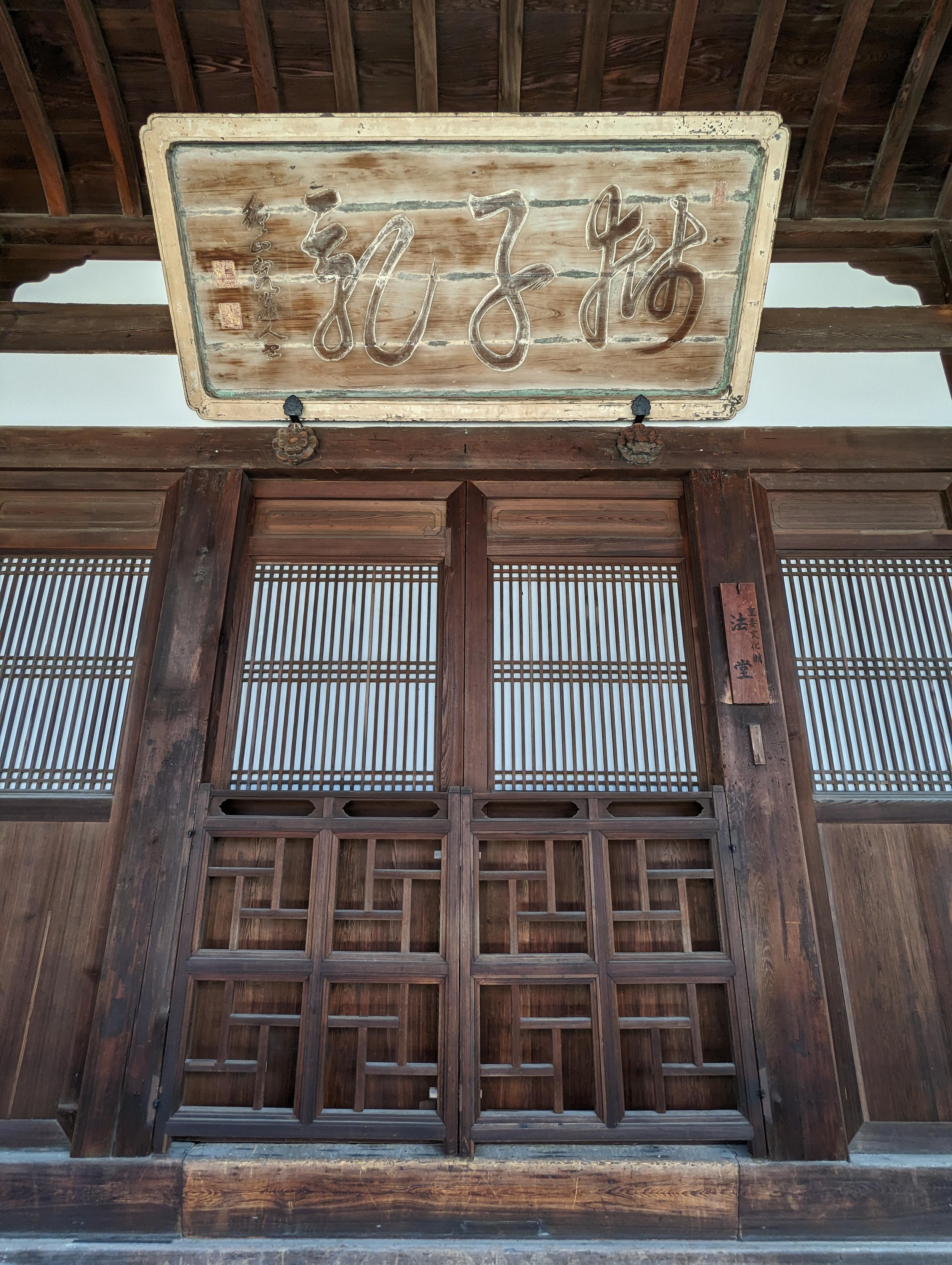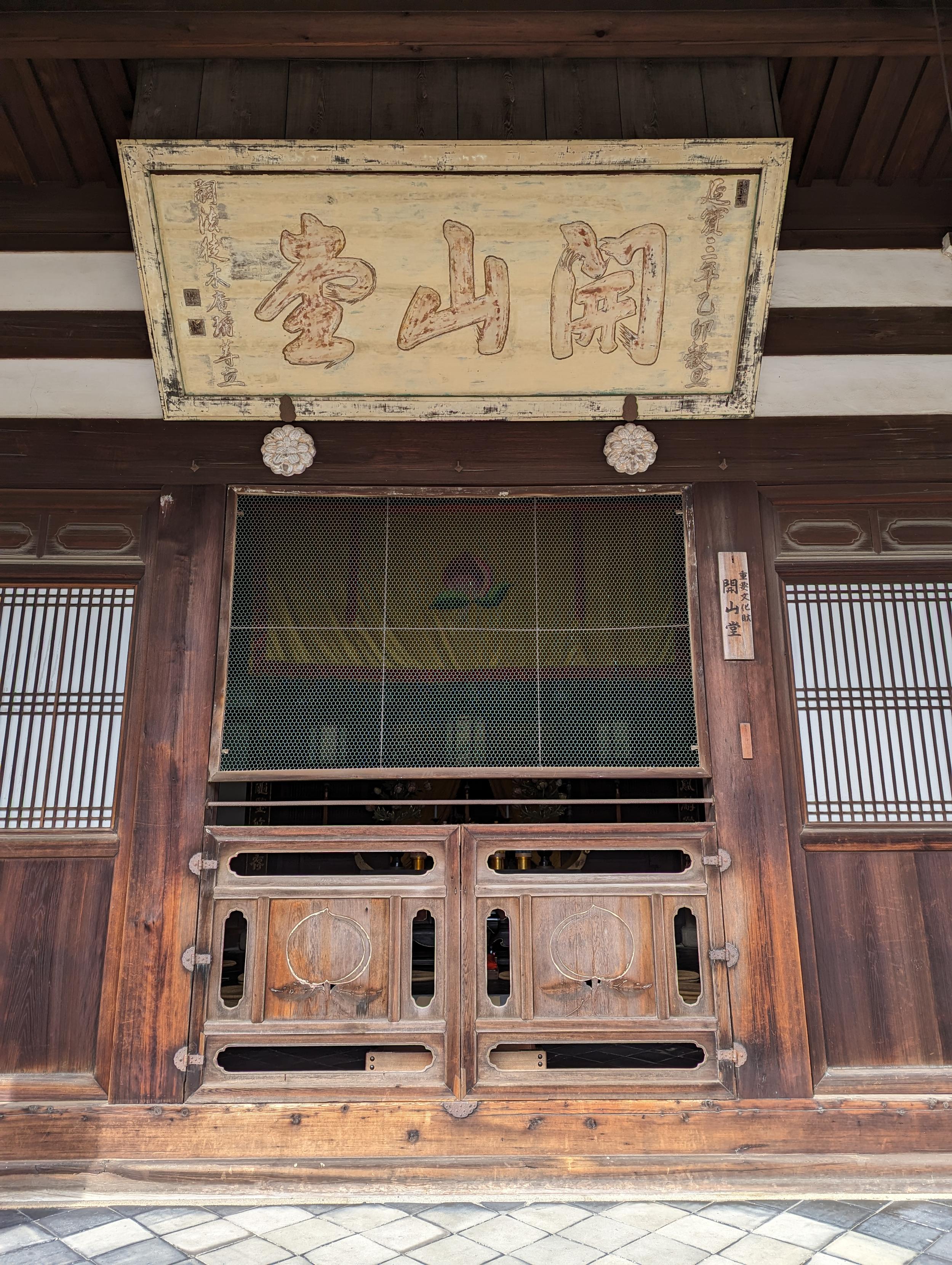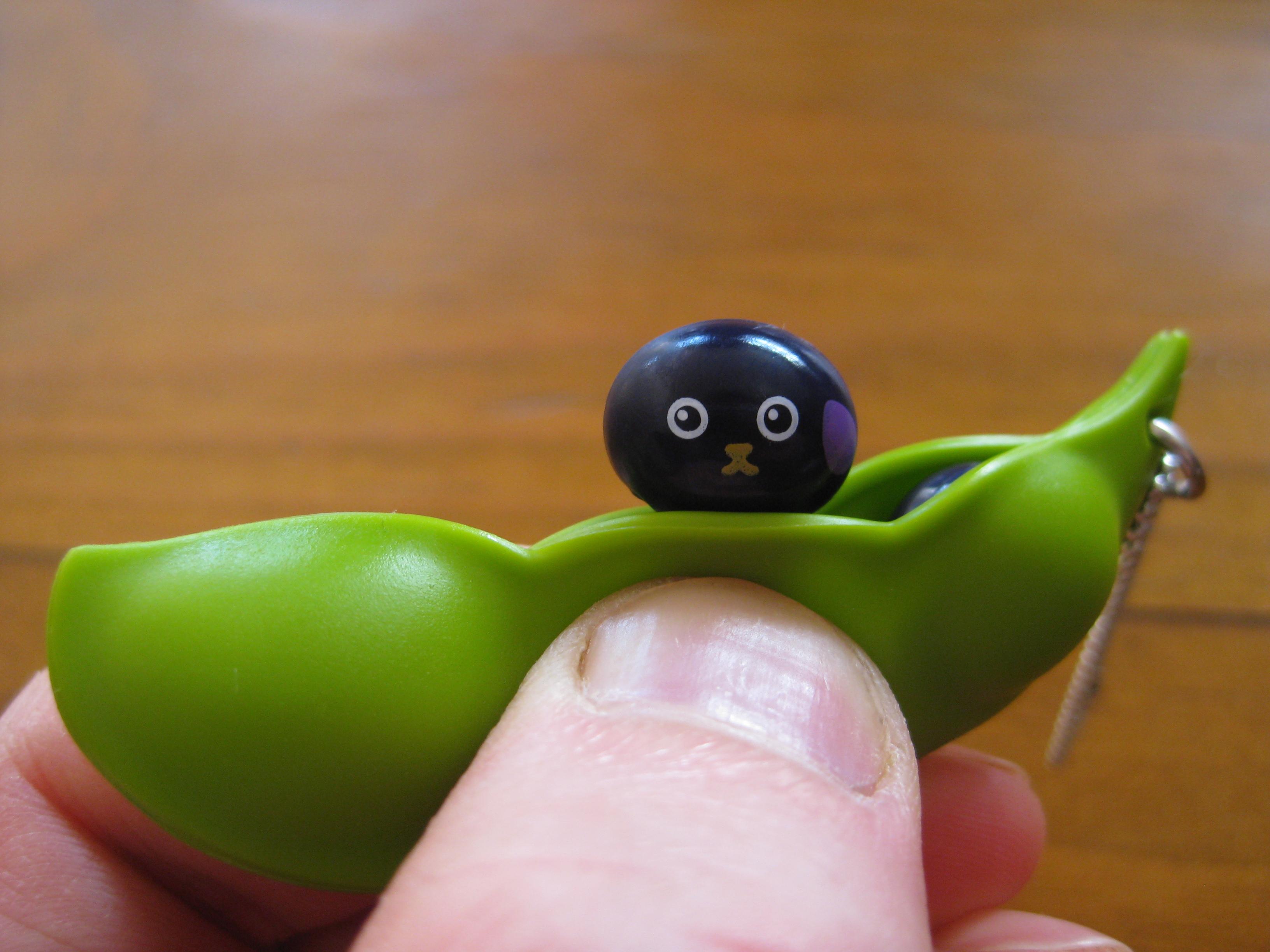Ingen brought the Ming style of calligraphy to Japan and was exceptionally skilled with a brush.
Along with his disciples Mu'an (木庵性瑫 1611-84) and Sokuhi Nyoitsu (即非如一 1616-71), he was counted as one of the "Ōbaku no Sanpitsu" (黄檗三筆 "Three Brushes of Ōbaku").

Hung above many of the doors and gates at Manpuku-ji are framed pieces of calligraphy carved in wood...highlighting the beautiful style of writing brought over from the mainland.

Hung above many of the doors and gates at Manpuku-ji are framed pieces of calligraphy carved in wood...highlighting the beautiful style of writing brought over from the mainland.

Hung above many of the doors and gates at Manpuku-ji are framed pieces of calligraphy carved in wood...highlighting the beautiful style of writing brought over from the mainland.

Hung above many of the doors and gates at Manpuku-ji are framed pieces of calligraphy carved in wood...highlighting the beautiful style of writing brought over from the mainland.

Mame-shiba, a popular character back in the day. Little rubber bean pods would be squeezed revealing a tiny bean with a shiba dog face.

Mame-shiba, a popular character back in the day. Little rubber bean pods would be squeezed revealing a tiny bean with a shiba dog face.